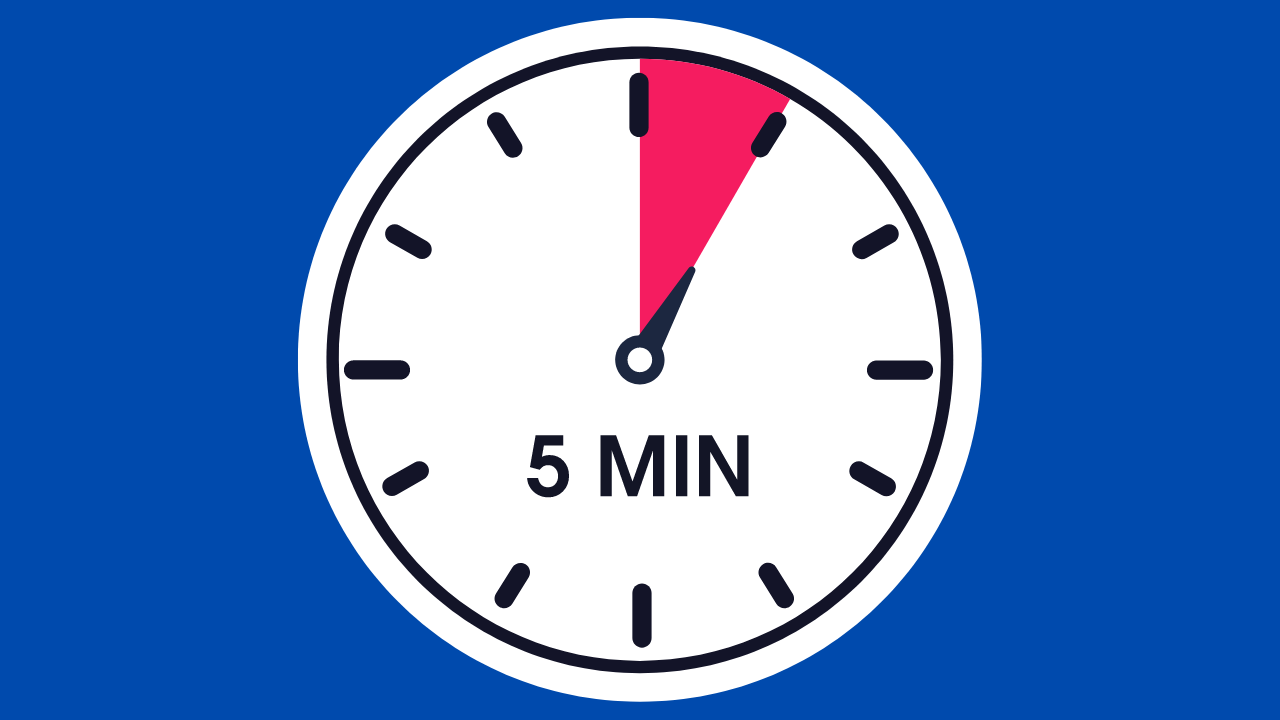Mastering Productivity: Insights from Elon Musk’s 5-Minute Rule
Elon Musk is probably the busiest man on the planet right now!
If there’s one thing that Elon Musk is known for, it’s his impressive track record of productivity. From founding PayPal, Tesla, and SpaceX to his ambitious plans for colonizing Mars while chowing down lunch meals within 5 minutes, before returning to work. Musk has accomplished more in a decade than most people do in a lifetime.
Notably, he also assumes significant roles as the owner of Twitter and X Corp., and co-founder of Neuralink and OpenAI (ChatGPT).

Musk is also a family guy, spending up to four days a week with his six children. He also makes time for regular exercise twice a week, as well as his personal hobbies. How does he manage to accomplish everything?
But how does he manage to stay so productive, and what can we learn from his methods? Because of Elon Musk’s 5-minute rule time management rule.
Whether you’re an entrepreneur, a student, or just someone looking to get more done, Elon Musk’s 5-Minute Rule is a great productivity skill that can help you take your life to the next level.
How can an ordinary person manage their time so successfully on such a rigorous schedule?Despite the fact that many people point to Elon Musk’s “superhuman” capacity to focus without interruptions or his abnormal degree of intelligence, there’s a better reason for his superb time management: time blocking.Time blocking is a time management technique employed by extremely successful CEOs, entrepreneurs, and productivity experts such as Tony Robbins, Tim Ferris, and David Allen.But what exactly is time blocking, and how does it work? And how can you utilize it to boost your productivity? Let’s find out!
What is the 5-minute rule?

Elon Musk’s 5-minute rule is one of the most effective time management strategies. It forces you to split your day into time blocks.
Each block is dedicated to completing one or more activities, allowing you to create a specific timetable that outlines what you will work on and when you will work on it.
Elon Musk’s day is scheduled from the moment his head rises from his bed at 7 a.m. There is no room for random interruptions or unplanned time blocks. No time wasters!
Time blocking pushes you to fill spare time with pre-commitments and an activity plan. This protects you from wasting valuable time on a task that could be completed more quickly.
As a result, time blocking is a well-known time-saving strategy.
The idea is simple: whenever you have a task that takes less than five minutes to complete, do it immediately.
This could be anything from responding to an email to tidying up your workspace. By tackling small tasks as soon as they come up, you free up mental and physical space to tackle bigger, more complex tasks later.
The 5-Minute Rule is based on the principle of “micro productivity,” which is the idea that small, incremental steps can add up to big achievements over time.
Elon Musk’s 5-Minute Rule might look straightforward but putting it into practice may be difficult. The key reason for this is that you must plan your following day’s work in 5-minute increments.
Here are some tips on how to do it.
How the 5-minute rule works in 5 simple steps
In five easy steps, learn how to apply Elon Musk’s 5-minute rule.

- 1Identify the tasks: Divide a ruled sheet of paper into two columns. Every two lines in the left column should correspond to a 5-minute chunk of the day.
- 2Estimate and Plan: Estimate how long each item will take to accomplish, then list them in the left column with their associated time blocks. Add discussion notes in the appropriate right column if desired. It is difficult to predict how long each job will take. Time monitoring is an excellent approach for avoiding this guessing.
- 3Think about the unexpected: Allow for modifications or unanticipated activities by including buffer times or additional room around each time block.
- 4Start Working on the Task: As soon as the timer starts, dive into the task and work on it with full commitment. The key is to begin immediately, without allowing any further delay or distraction
- 5Repeat the process: Apply the 5-minute rule to other tasks or activities as needed. By incorporating this rule into your routine, you’ll develop a habit of taking action promptly and overcoming procrastination.
Don’t forget to celebrate your successes and use them as motivation to keep going.
Benefits of the 5-minute rule
Once you’ve mastered the time-blocking technique, certain long-term advantages will become apparent.
Tasks, for example, will be accomplished more quickly and accurately since you will be able to focus entirely on your obligations. Instead of dividing your attention among several jobs, you may focus entirely on the most critical ones.
There are also several other benefits of using the 5-minute Rule as a time-blocking method to boost productivity:

- Time blocking helps you to eliminate procrastination and stay focused on your daily routines. You will have allotted your time and there will be no time for unwarranted social media and unnecessary meetings and related time wasters.
- Time blocking creates a sense of momentum that can carry you through the day. You will feel energized, and this sensation alone can boost your productivity.
- The 5-minute rule with the cultivation of positive habits. By committing to spend just five minutes daily on a new habit, such as exercising, reading, or learning a new skill, you create consistency and make it easier to stick with the habit over time.
- The 5-minute rule helps reduce stress and overwhelm. Sometimes overwhelm can arise from a never-ending to-do list or the fear of starting a daunting task.

- By applying the 5-minute rule, you break down tasks into manageable chunks. This approach helps alleviate stress and reduces the feeling of being overwhelmed. By taking small steps consistently, you build momentum and gain a sense of accomplishment.
- The 5-minute rule enhances decision-making. The 5-minute rule encourages you to make a decision within five minutes, preventing analysis paralysis and promoting confident choices. This approach helps improve your decision-making skills and can lead to more efficient and effective outcomes.
- Time blocking allows you to better manage your priorities at work and provides you with additional peace of mind. This will drive you to make judgments about what is most important and will help you to manage your calendar more realistically.
- The 5-minute rule can undoubtedly help you be more efficient in managing the items on your to-do list. When you arrange comparable jobs together in a time block, you will be able to work quicker and more efficiently. Otherwise, you will waste time moving between things and be less productive.
Elon Musk’s 5-minute rule template
Do you believe this strategy may be the ideal option for you? Here is a free Google sheet template that you can download and customize to your specifications.
To get the template, fill out the simple form below and then make a copy for your use.
Examples of applying the 5-minute rule in your daily life
The 5-Minute Rule can be applied to any area of your life where you want to be more productive. Here are a few examples of how the 5-Minute Rule can be applied in different areas of life to achieve different goals.
- In the morning, spend five minutes tidying up your workspace before you start your day.
- When you get an email that requires a quick response, take five minutes to send a reply instead of letting it linger in your inbox.
- If you need to make a phone call, take five minutes to do it instead of putting it off.
- When you’re feeling overwhelmed by a big project, take five minutes to break it down into smaller, more manageable tasks.

- If you’re trying to develop a new habit, spend five minutes each day working on it instead of trying to do it all at once.
- A college student can use the 5-Minute Rule to stay on top of her coursework and maintain a high GPA while working a part-time job.
- A busy executive can use the 5-Minute Rule to stay on top of her email inbox and avoid feeling overwhelmed by her workload.
- A stay-at-home parent can use the 5-Minute Rule to develop a consistent exercise routine and improve her overall health and well-being.
Conclusion
To summarize, we all have the same 24 hours each day. The distinction between top achievers who get a lot done, such as Elon Musk, and those who don’t isn’t one of intelligence, talent, or heredity.
It is the result of a time-valued attitude combined with the implementation of an efficient time management approach, such as time blocking.
It is never too late to begin time management! Let’s be honest. With our hectic schedules and overflowing calendars, any extra assistance is always welcomed.
The stronger your calendar management skills, the better your life management skills.

The 5-Minute Rule is a simple but powerful technique that can help you stay focused, avoid procrastination, and make progress towards your goals in a sustainable way.
Time blocking is a simple, adaptable, and efficient approach to help you better manage your time, even when your life is chaotic.
Most significantly, time blocking allows us to regain control of our time, which, once gone, cannot be recovered.
So why not give the 5-Minute Rule a try and see how it can transform your productivity and your life?













